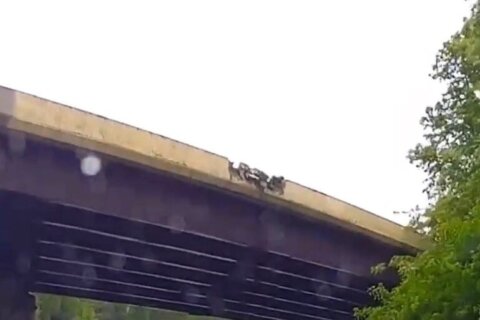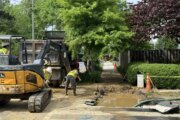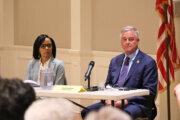WASHINGTON — Although Herrmine has just been downgraded from a hurricane to a tropical storm, its trek up the southeast coast is still bad timing for those with weekend beach plans, but it could be worse for beach-bound drivers on U.S. 50 in Maryland.
Think of it this way: “During high wind or heavy rain, eastbound drivers lose a lane.”
When it rains at the Chesapeake Bay Bridge, bridge operators close the reversible lane, which limits eastbound traffic to two lanes when crossing the Chesapeake. When this occurs during heavy travel periods, big backups can form.
But drivers this weekend are in luck since any impacts from Hermine would likely occur well after the weekend getaway.
The Maryland Transportation Authority will hoist wind restrictions if sustained wind speeds or wind gusts reach 40 to 49 mph. When this occurs, house trailers, empty box trailers and some other high-profile vehicles will be prohibited from traveling the bridge.
When wind speeds exceed 50 mph, most high-profile, lightweight vehicles are prohibited from crossing the bridge. This means that only automobiles, pickup trucks, flatbed trailers, commercial buses and heavy-laden tractor/trailers are permitted on the bridge.
Since the dual spans of the Bay Bridge rise well over 100 feet above the water, winds are often gusty even during routine summer storms.
On rare occasions, officials have ordered the bridge completely closed to all traffic because of dangerous weather conditions. According to the MDTA, this has happened a total of seven times.
Hurricane Sandy was responsible for the longest recorded closure of the Bay Bridge. The bridge was off-limits for over 18 hours from 2:49 p.m. Oct. 29, 2012 to 9:04 a.m. on Oct. 30 in 2012. Traffic was prohibited from crossing the bridge during three windy thunderstorms earlier that year, including the June derecho.
The bridge was closed on Aug. 27, 2011 during Hurricane Irene and for nearly 17 hours during Hurricane Isabel in September 2003. A category 2 storm at landfall, Isabel produced a prolonged period of tropical storm force winds above the Chesapeake Bay.








